Active Sensemaking and the Challenge of Shifting the Culture of an Organization
by Barrett Horne
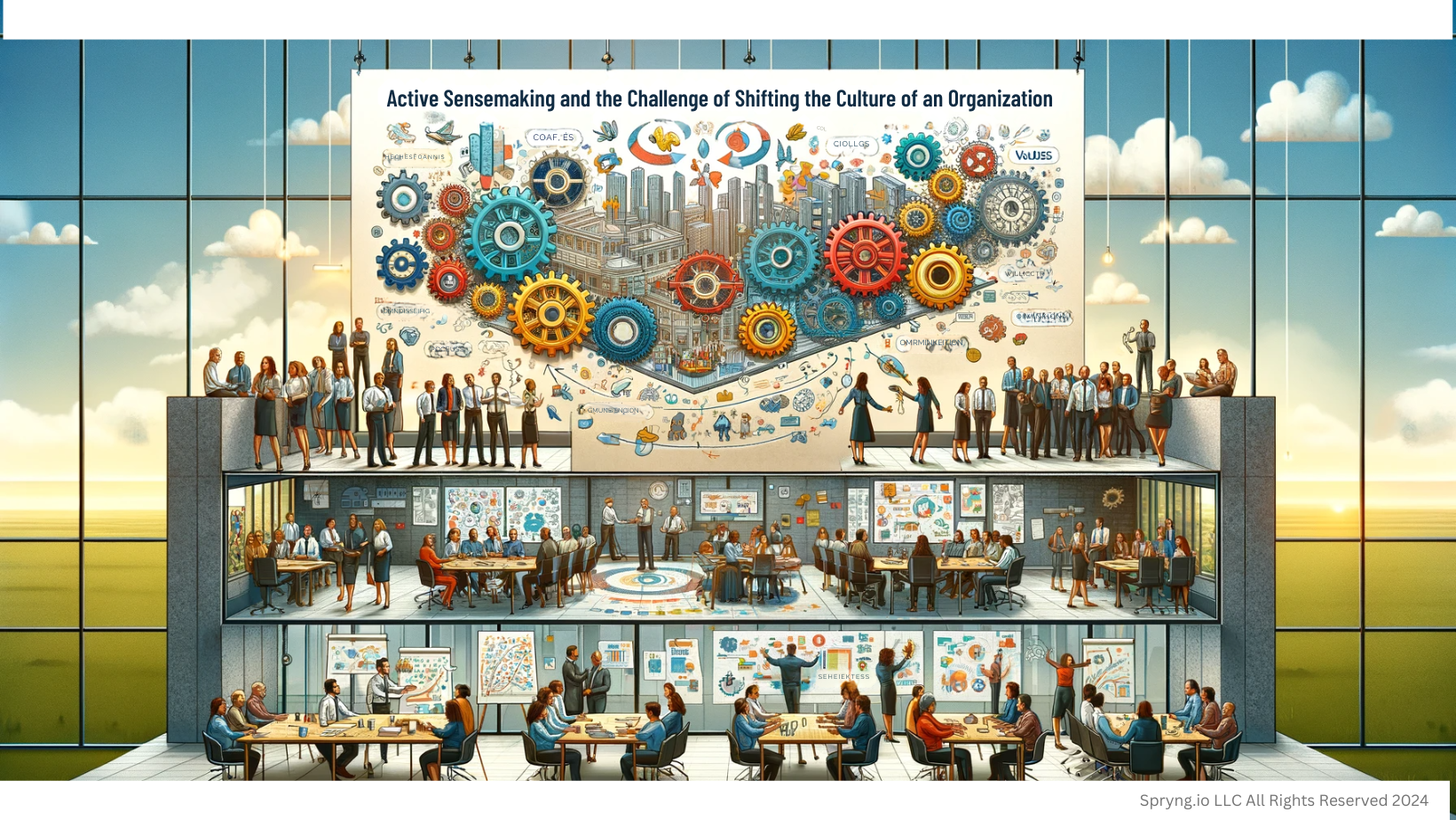
Introduction - Understanding Organizational Culture Complexity
The challenge of shifting and shaping the culture of an organization is a common issue faced by leaders of all kinds of organizations. Unsurprisingly, a Google search will reveal a multitude of resources and consultants offering a bewildering array of strategies to transform organizational cultures towards desirable ends. Most of these culture change proposals sound impressive and seem like sensible suggestions, ranging from top-down to bottom-up strategies along with creative hybrid proposals. What those proposing solutions have in common—at least those that are honest—is the acknowledgement that shifting the culture of an organization is extremely difficult:
Changing an organization’s culture is one of the most difficult leadership challenges. That’s because an organization’s culture comprises an interlocking set of goals, roles, processes, values, communications practices, attitudes and assumptions.
The elements fit together as a mutually reinforcing system and combine to prevent any attempt to change it. That’s why single-fix changes, such as the introduction of teams, or Lean, or Agile, or Scrum, or knowledge management, or some new process, may appear to make progress for a while, but eventually the interlocking elements of the organizational culture take over and the change is inexorably drawn back into the existing organizational culture.1
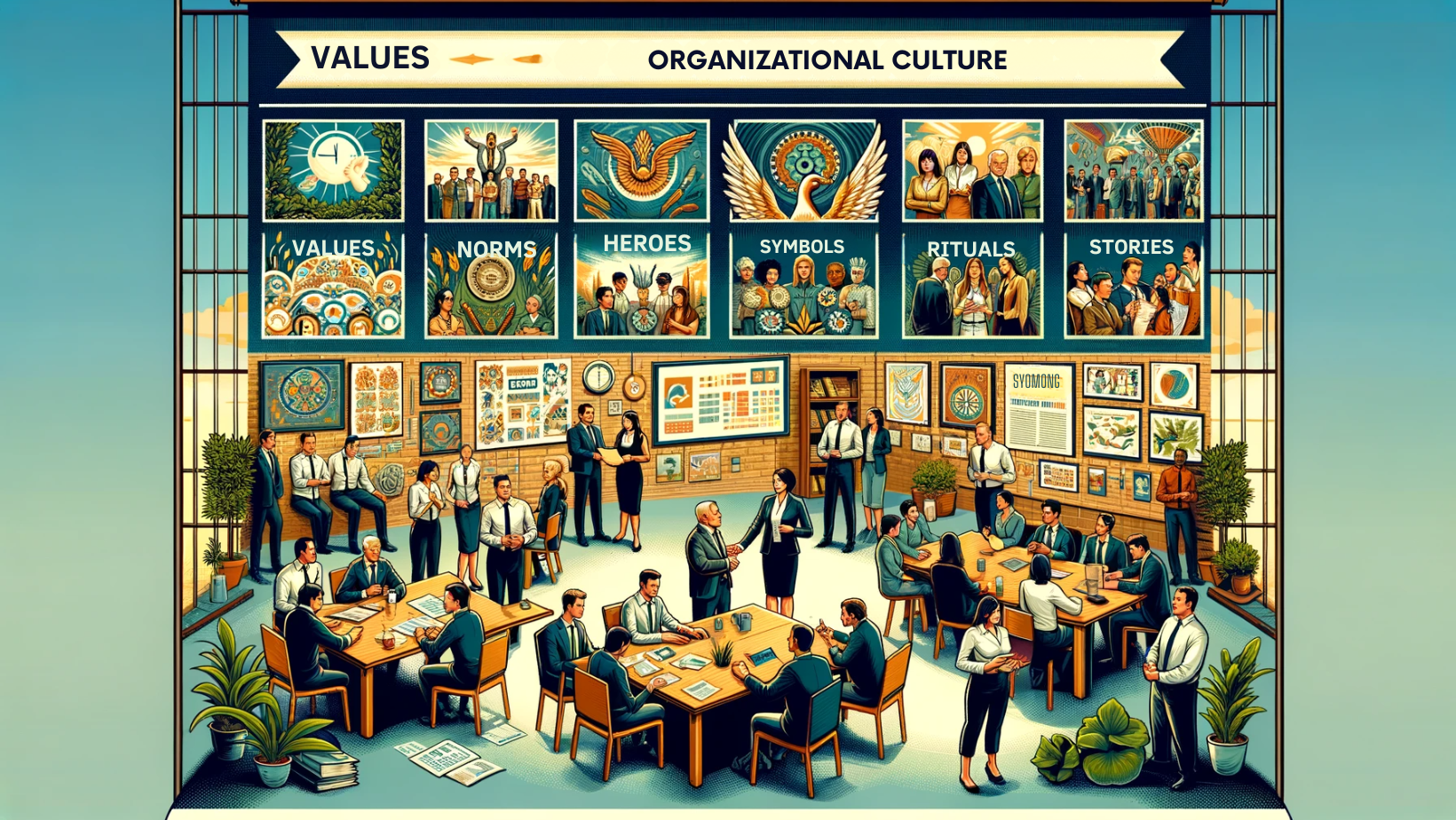
Defining Culture - The Elements of Organizational Identity
That culture change is hugely difficult should not be surprising when we consider what we mean by ‘culture’—a set of shared beliefs, attitudes, customs and behaviours that characterize every collection of human beings. The culture of a group typically includes varieties of elements such as:
- Values - Core principles and beliefs that guide the actions and decisions of individuals.
- Norms - Unspoken rules and expectations that dictate appropriate behaviours.
- Symbols - Tangible and intangible representations, such as rituals and language, that embody a group's identity and values.
- Heroes - Individuals or events that are celebrated and held up as positive examples or role models.
- Rituals and ceremonies - Formal or informal events and activities that reinforce and express what is important.
- Stories - Narratives, anecdotes, and legends that are shared within a group to convey its history, values, and significant events.
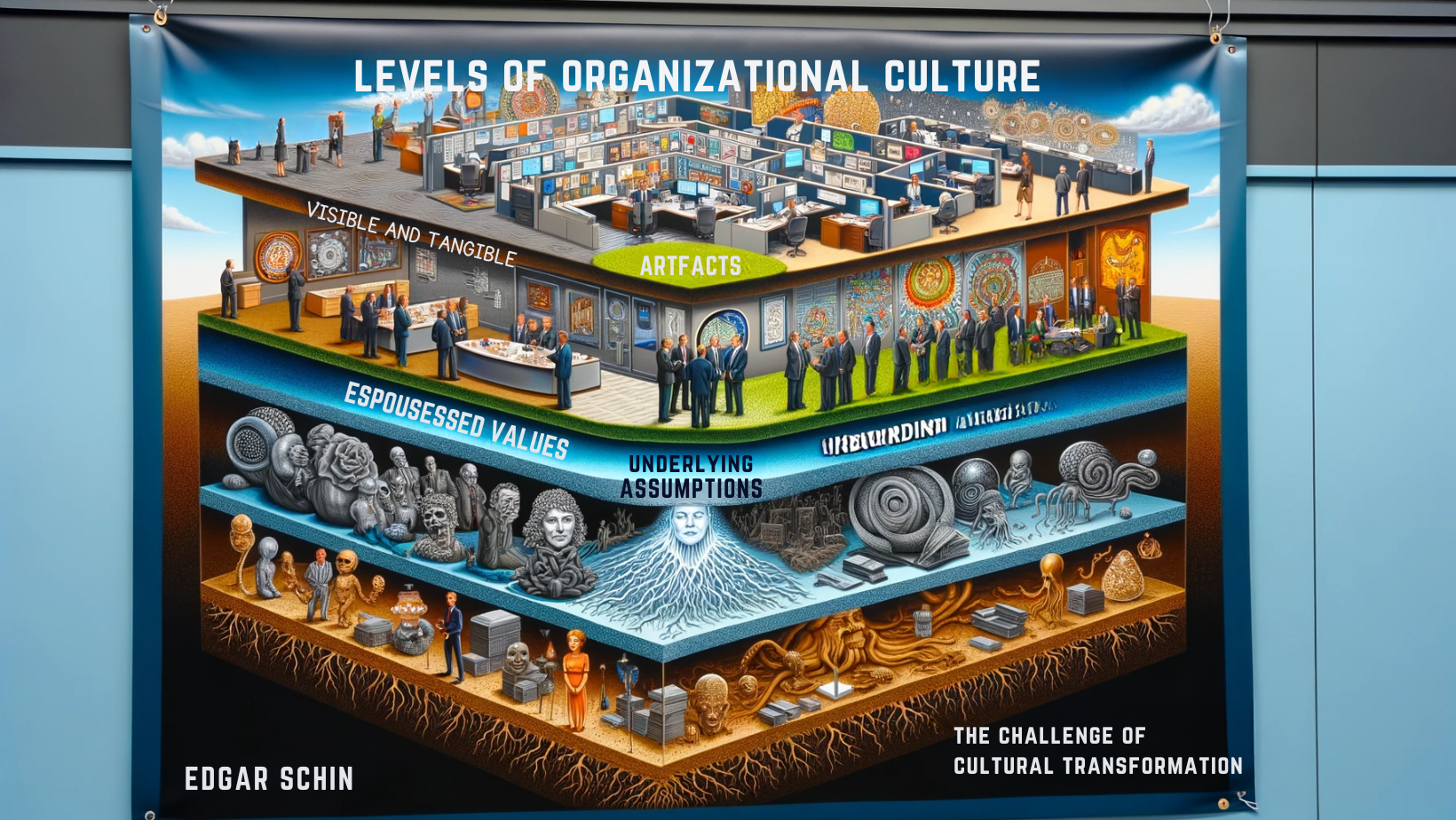
Schein's Levels of Culture - Artifacts, Values, and Assumptions
The difficulty of sorting out how these kinds of elements play out within a specific organizational context is made even more difficult in that, while some of them may be explicit, obvious, and intentional, others are implicit, hidden and unconsidered. Edgar Schein helpfully distinguishes three levels of culture as expressed within an organization: Artifacts, Espoused Values, and Underlying Assumptions, as per the illustration below.
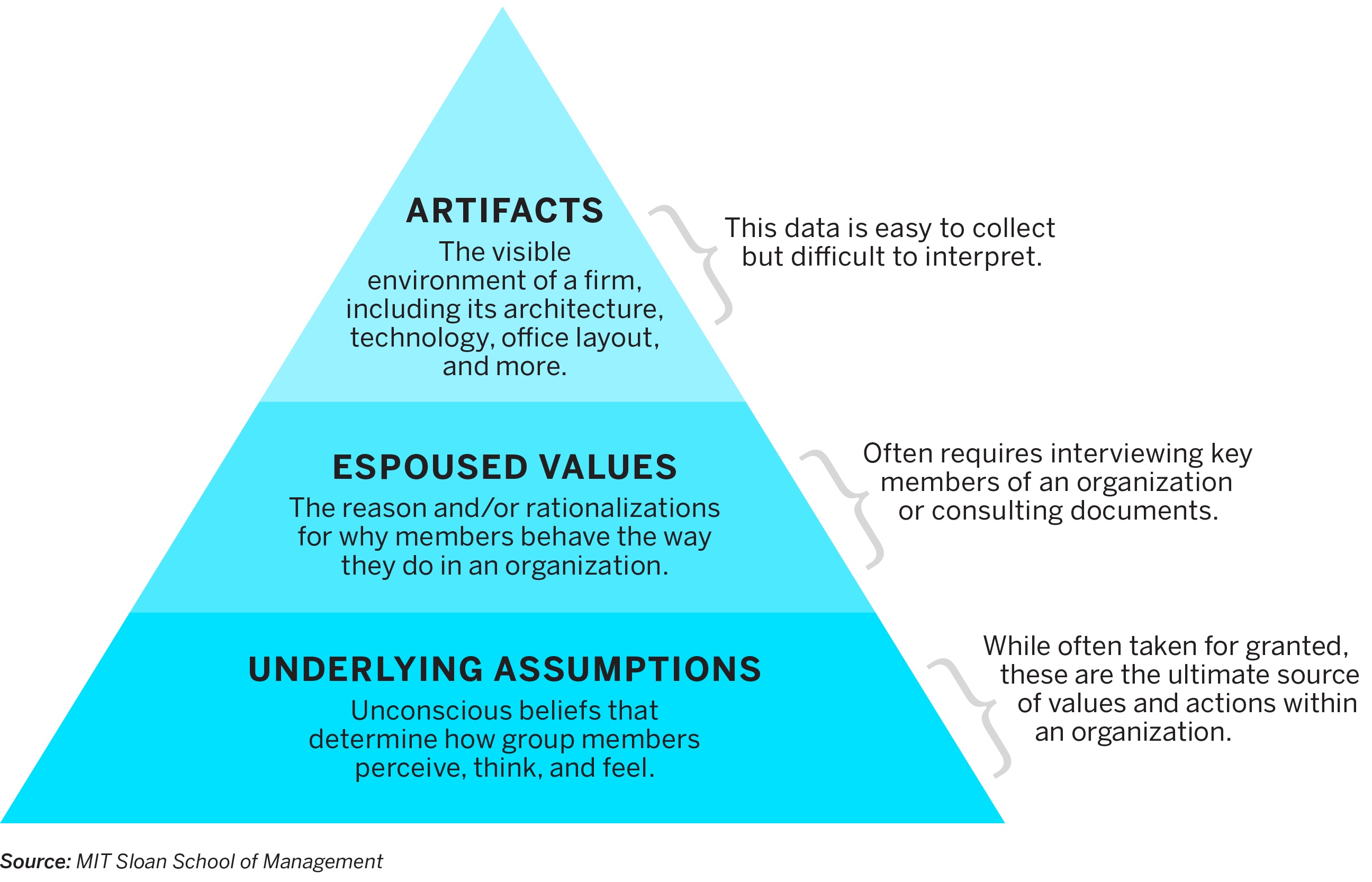
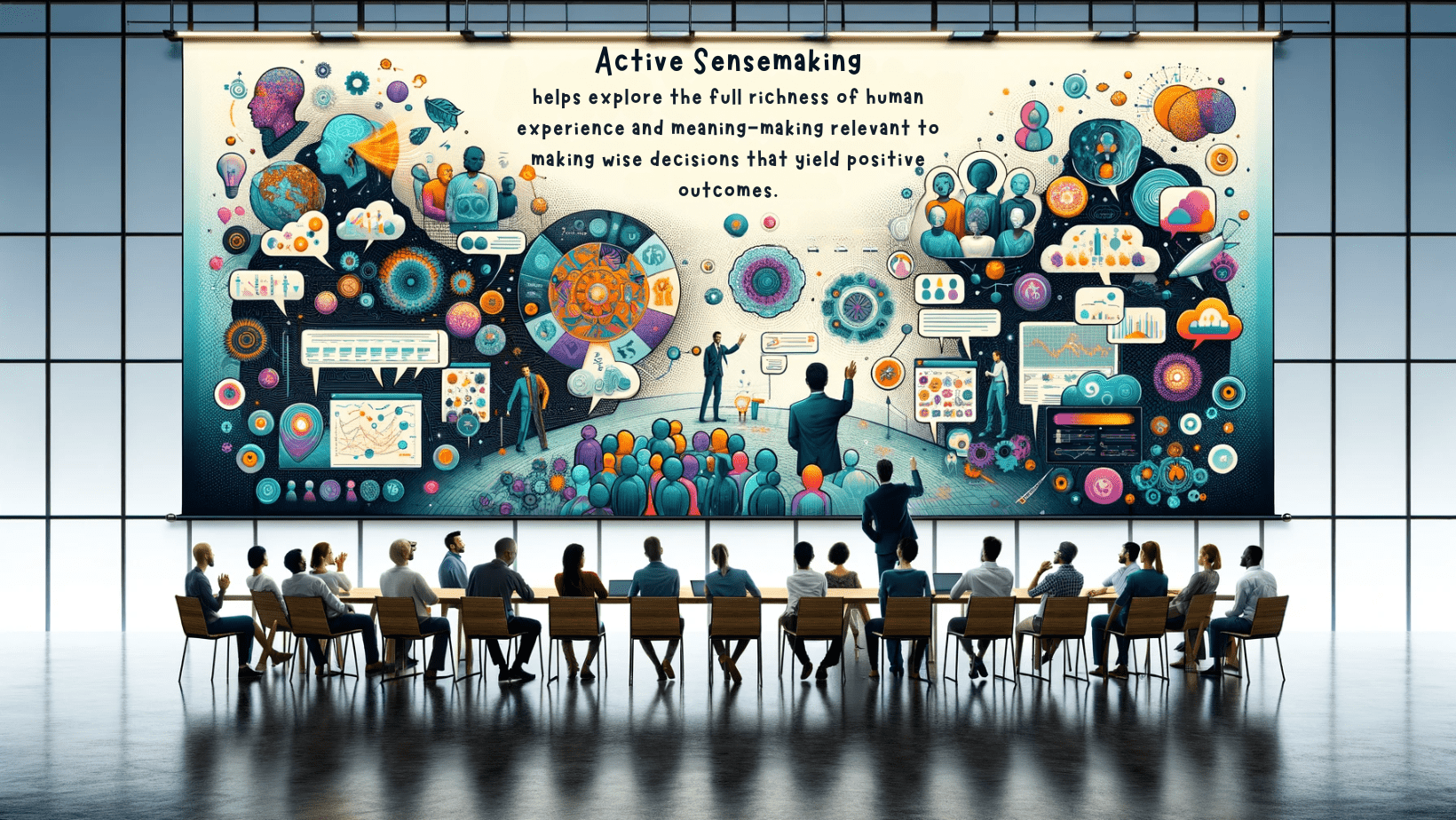
The Difficulty of Culture Change - Overcoming Inherent Challenges
All of this bears witness to the truth of the oft-quoted aphorism (typically attributed to Peter Drucker) that 'culture eats strategy for breakfast.'
Moreover, as Schein’s pyramid suggests, the most influential part of a group’s culture lies in the bottom third of the model—the underlying and mostly unconscious assumptions that shape and influence all the higher levels. All of which is further complicated by the fact that every human group is genuinely unique, composed of human beings who are, as individuals, also unique.
There are at least two significant implications of this reality. The first is that there can never be a one-size-fits-all approach or model to changing organizational culture as no two cultures will ever be the same. The second has to do with the critical importance of building any culture change initiative on deep insights into the existing culture(s), including especially the bottom level of Schein’s pyramid. Without that deep insight, the most sophisticated culture change initiatives risk being ineffective at best and counter-productive at worst.
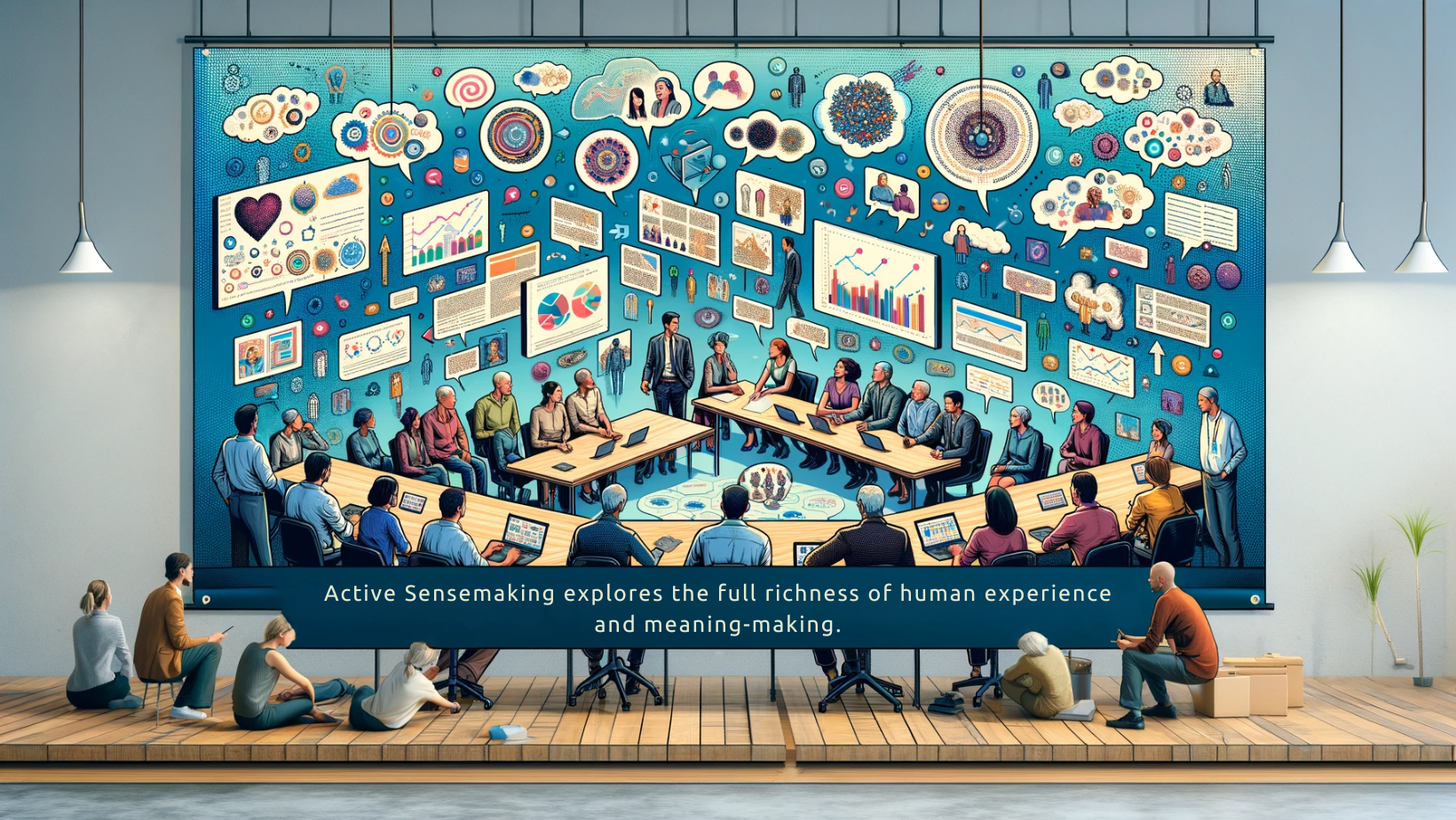
Active Sensemaking - A New Paradigm for Change
It is at this point that the research potential of Active Sensemaking becomes evident. As Schein’s model notes, it is relatively straightforward to discern the cultural ‘artifacts’ of an organization (though more challenging to interpret their meaning). And there are methods for teasing out the ‘espoused values’ (though methods like interviews and focus groups are not scalable). But how is it possible to uncover the ‘underlying assumptions’?
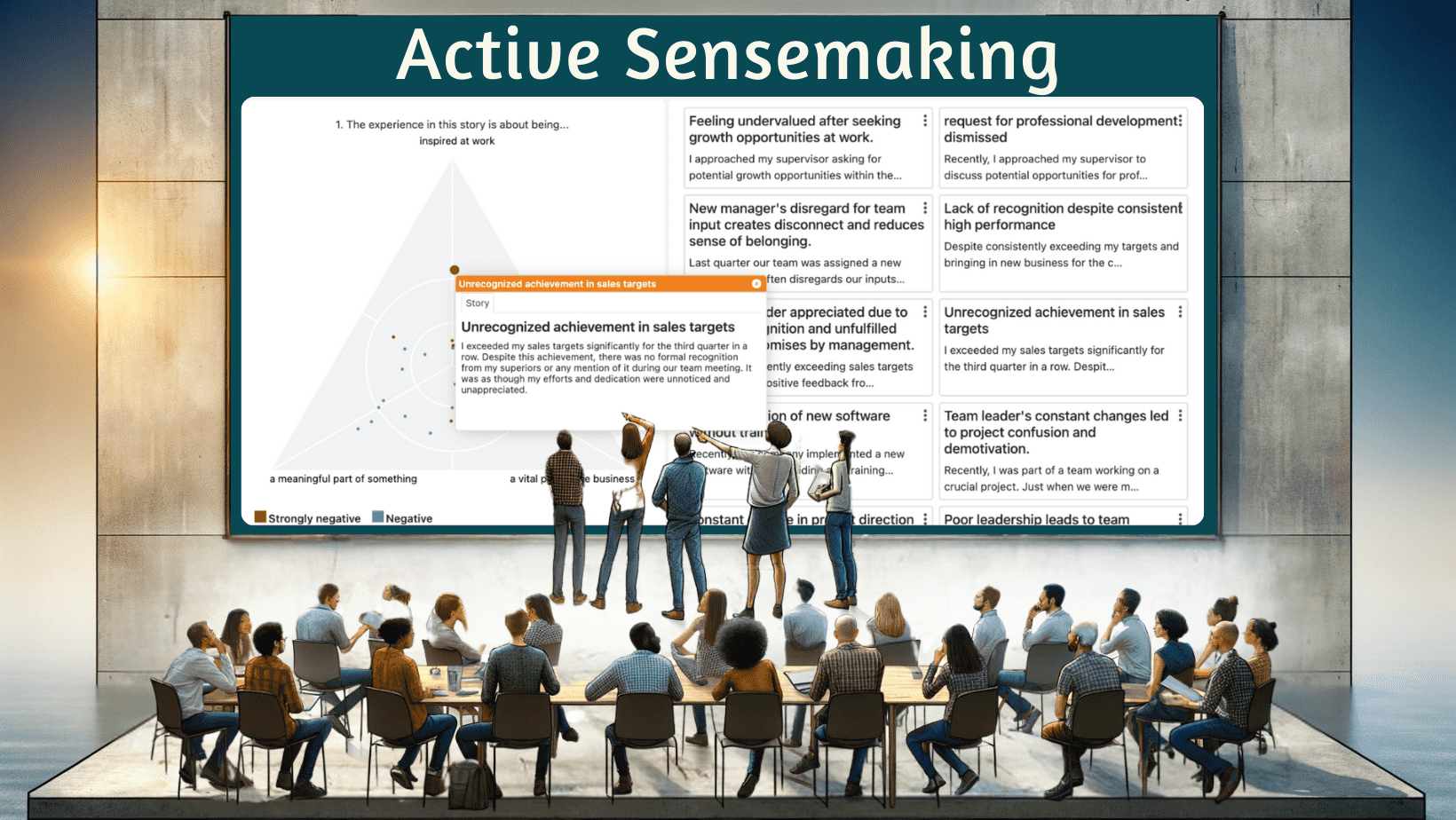
Active Sensemaking - Capturing Human Experience
At the heart of Active Sensemaking’s effectiveness is the obvious but powerful truth that, as human beings, we naturally make sense of the world by applying meaning to our experiences. Things happen to us and we interpret those things, typically telling a story that provides meaning to the experience - My colleague goes to unusual lengths to express gratitude for some work I have done and I tell a story about my office being an encouraging place to work. The Director makes an important decision without consulting any of the stakeholders and I tell a story about poor communication and arrogant leaders. The methodology of Active Sensemaking captures this natural human tendency and makes it possible to apply at scale.
In essence, participants in an Active Sensemaking initiative are invited (anonymously) to share an experience or a story in response to a carefully crafted but simple question that is relevant to the purpose of the inquiry. In this case, relevant to discerning cultural patterns and assumptions. Then the respondent responds to a further set of questions by which they indicate their interpretation of the story they just shared. Finally, there are some relevant demographic questions. Unlike traditional surveys, participants are encouraged to share as many experiences as they wish, each time answering the interpretive questions about the story shared.

Applying Active Sensemaking - Insights for Culture Shifting
As the data is collected, the stories and their interpretations remain connected. It is always possible to view how any individual experience was interpreted. And as patterns of interpretation emerge, all of the stories behind those patterns are there to be queried and explored. Moreover, each of the various interpretive questions can be used as filters to explore the correlations and differences between various patterns of interpretation—patterns that illuminate an organization’s real culture.
The GIF below provides a glimpse of how the quantitative and qualitative data from an Active Sensemaking inquiry can reveal insightful patterns for informing culture shifting strategies. While the illustration is taken from an employee engagement report, it also shows something of the power and possibilities of Active Sensemaking for exploring and shifting organizational culture.
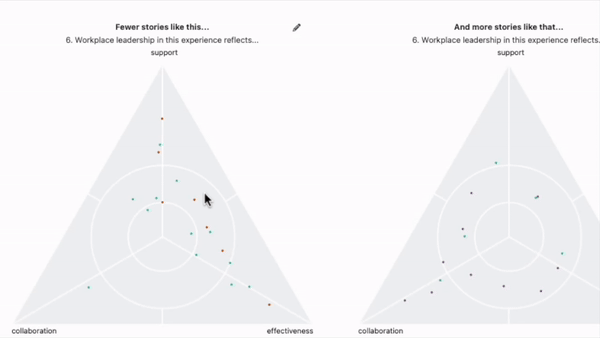

So what - The Potential of Active Sensemaking in Organizational Transformation
It is impossible to overstate the potential utility of this methodology. A well designed Active Sensemaking initiative is capable of yielding insights—and at scale—far beyond what is possible with traditional methods of inquiry. The consistent connection between stories and their interpretations can reveal critically important ‘weak signals’ that would otherwise have been missed. Important answers may be revealed to questions that it had not occurred to leaders to ask.
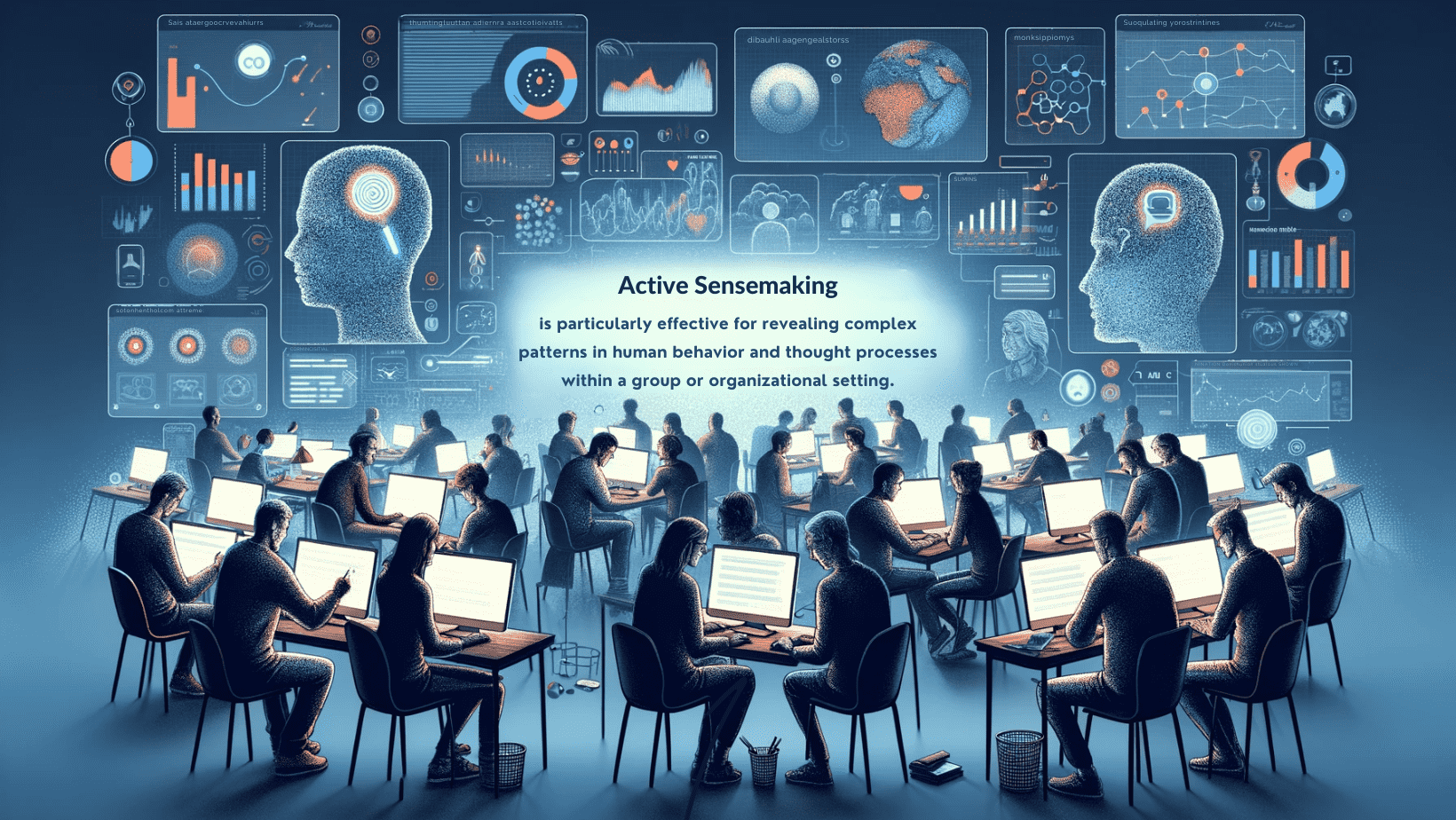
Now what - Join the Journey of Cultural Transformation
If shifting organizational culture is important to you (at any scale), I invite you to learn more about Active Sensemaking as an important part of your culture-shifting toolbox. You can learn about the approach and practice using it on a challenge you are currently facing. Join a team of experts to-
